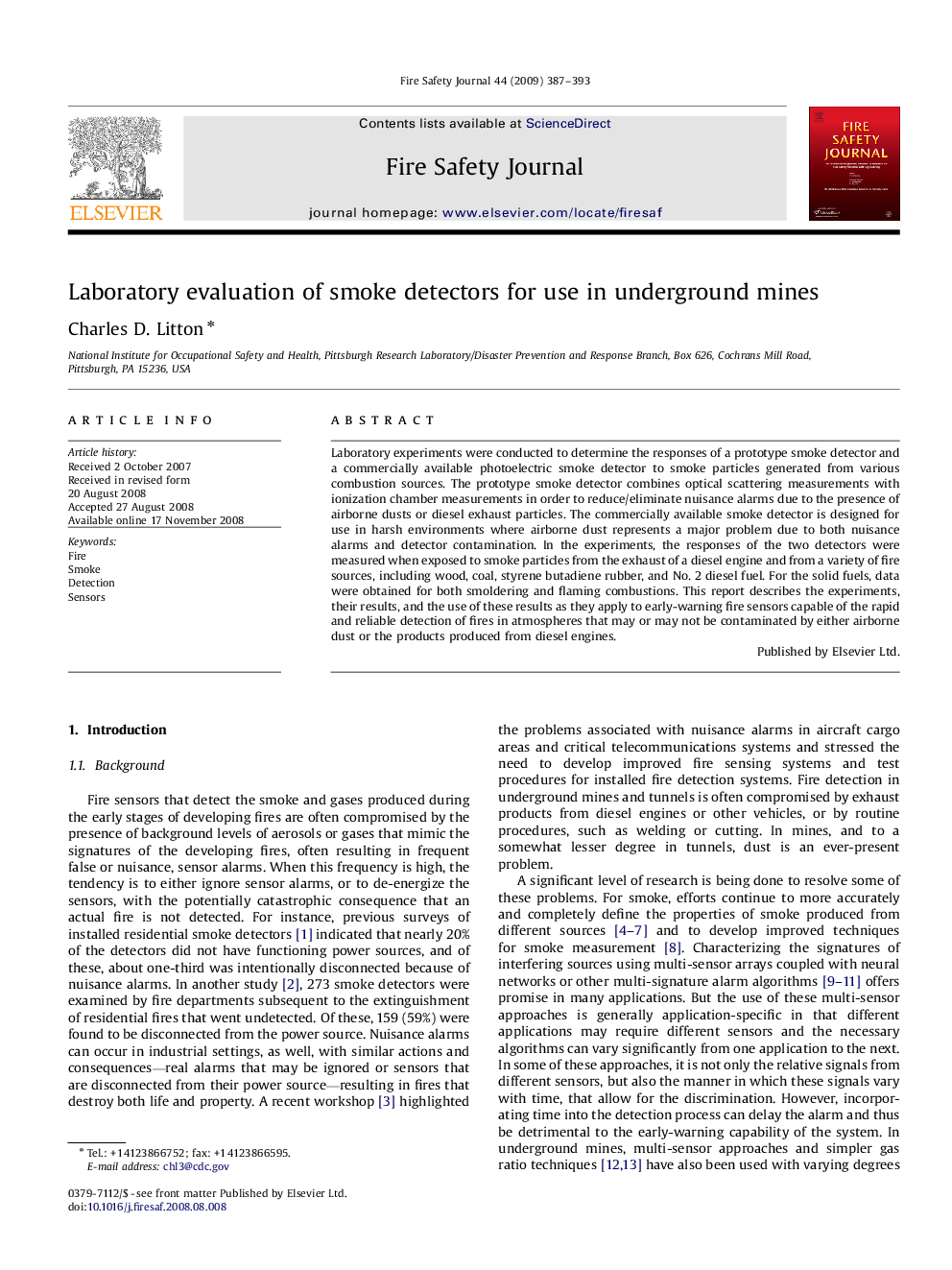| Article ID | Journal | Published Year | Pages | File Type |
|---|---|---|---|---|
| 270306 | Fire Safety Journal | 2009 | 7 Pages |
Laboratory experiments were conducted to determine the responses of a prototype smoke detector and a commercially available photoelectric smoke detector to smoke particles generated from various combustion sources. The prototype smoke detector combines optical scattering measurements with ionization chamber measurements in order to reduce/eliminate nuisance alarms due to the presence of airborne dusts or diesel exhaust particles. The commercially available smoke detector is designed for use in harsh environments where airborne dust represents a major problem due to both nuisance alarms and detector contamination. In the experiments, the responses of the two detectors were measured when exposed to smoke particles from the exhaust of a diesel engine and from a variety of fire sources, including wood, coal, styrene butadiene rubber, and No. 2 diesel fuel. For the solid fuels, data were obtained for both smoldering and flaming combustions. This report describes the experiments, their results, and the use of these results as they apply to early-warning fire sensors capable of the rapid and reliable detection of fires in atmospheres that may or may not be contaminated by either airborne dust or the products produced from diesel engines.
